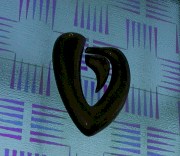Surgical researchers at the Texas Heart Institute have reached many milestones over the years, including
- First implantation of a total artificial heart.
- Implantation of the first government-sponsored left ventricular assist device.
- First implantation of the Hemopump, a heart assist device the size of a pencil eraser.
- Implantation of the first electrical left ventricular assist device.
- First implantation of the Jarvik 2000 continuous flow assist device.
- Use of a laser to bore channels through the heart muscle to increase blood flow.
- Development and testing of a revolutionary new 3-leaflet mechanical heart valve.
- First implantation in the United States of the HeartMate II, designed for small adults and children.
- First implantation of a continuous-flow device comprising 2 blood pumps implanted to replace the 2 sides of the patient's removed heart. The 2 pumps act as a man-made substitute for the natural heart.
Cardiology researchers at the Texas Heart Institute have made discoveries that improve patients’ lives in many ways. For example, they
- Discovered that warmer plaque is more likely to rupture and increase the risk of heart attack and sudden cardiac death.
- Used gene therapy to protect arteries from blood clots and from re-narrowing after a catheter interventional procedure.
- Developed special cells to line the inside of a heart assist device to protect the blood as it travels through the device.
- Designed new ways to place genes into cells.
- Tested a new gamma-radiation treatment intended to prevent arteries with stents from re-narrowing.
- Developed ways to see inside cells to learn how a disease progresses.
- Learned how vascular muscle cells communicate to produce substances that can help or hurt the heart.
- Found that elevated levels of a substance in the blood called C-reactive protein is not only a sign of heart disease but also a predictor of heart attack.
The Research section of this website provides more detail.



